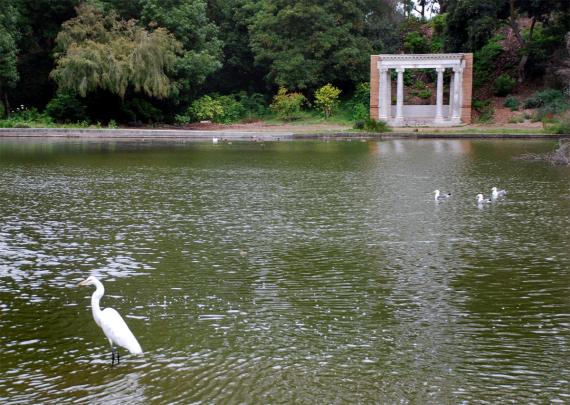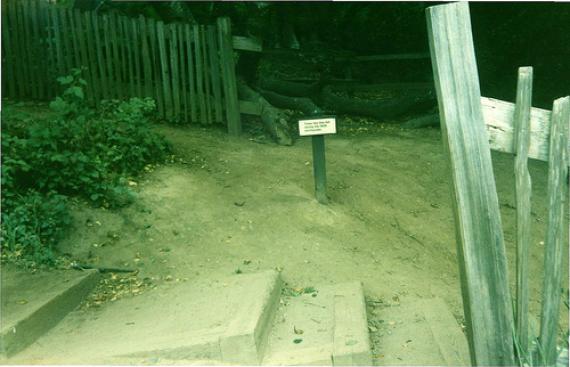City Guide: 1906 Earthquake
At 5:12 am on April 18, 1906, San Francisco incurred an epic earthquake. The 7.9 magnitude disturbance ran the length of the San Andreas Fault, with movements felt as far away as Oregon, central Nevada, and Los Angeles.
Back in the bay area, the human and environmental devastation was vast: an estimated 3,000-plus deaths resulted from the quake and its subsequent fires, which raged for days thanks to ruptured underground gas lines. Worse yet, some of the fires were triggered when firefighters unaccustomed to dynamite set-off the explosive while demolishing damaged buildings… obviously (to us) triggering further infernos.
Due to its massive economic and social impact, the affects of the earthquake and fires remain visible in modern day San Francisco. Therefore, it is without further ado that I present Atlas Obscura’s Guide to the 1906 Earthquake (and Fires)!
Cistern Circles

(source)
In the aftermath of the quake, city planners looked for solutions to stop the plague of fires. The solution would be called the “Auxiliary Water Supply System” (AWSS), composed of a variety of water-serving systems, including fire boats, seawater pumping stations, and a return to a system of long-term storage cisterns.
The successful installation of the cisterns was a triumph itself in the scandal- and corruption-filled rebuilding years - marked by the trial of Mayor Eugene Schmitz on 27 counts of graft and bribery…
Read the complete history of San Francisco’s Cistern Circles in their full entry in the Atlas.
Portals of the Past

(source)
The 1906 earthquake rocked San Francisco and the all-consuming fire that followed destroyed an estimated 25,000 buildings, including many of the gilded era mansions of San Francisco’s wealthy. This small columned memorial sits on the edge of Lloyd Lake in Golden Gate park as a reminder of all that was lost.
The portals began their life at the front entry to the 1891 mansion of railroad tycoon Alban Towne on California Street on Nob Hill…
More information on Portals of the Past in its full entry at the Atlas.
Earthquake Fence

(source)
Contemporary visitors to the park can walk the half-mile “Earthquake Trail” from the Bear Valley Visitor Center to the famous Earthquake Fence. While it may seem like a drunkard originally plotted the fence, prior to the quake it had actually been one continuous stretch of pickets. Today, there is a 20-foot gap between two sections, separated in the blink of an eye…
Further details on the Earthquake Fence at its full listing in the Atlas.










Follow us on Twitter to get the latest on the world's hidden wonders.
Like us on Facebook to get the latest on the world's hidden wonders.
Follow us on Twitter Like us on Facebook